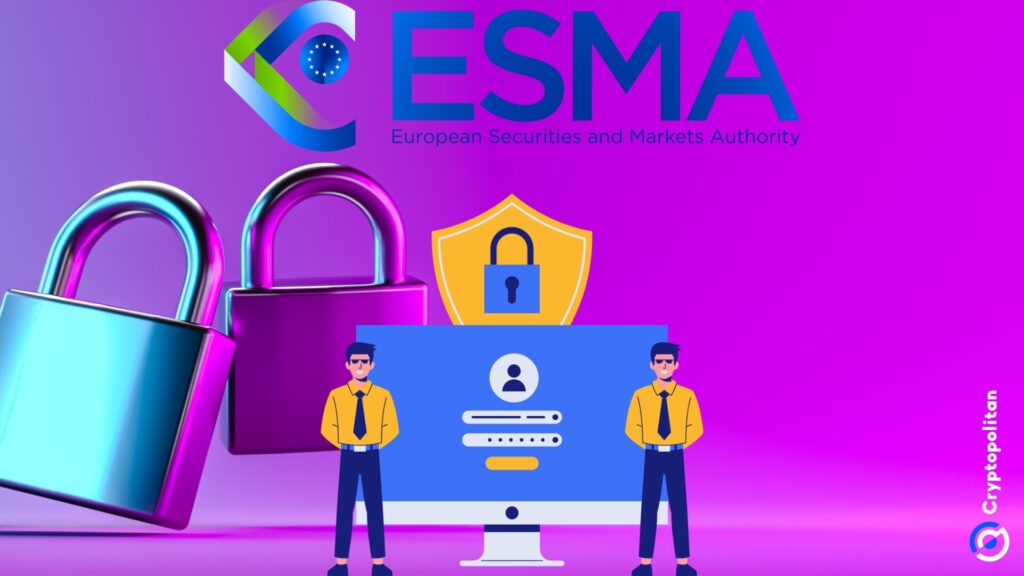
Understanding ESMA: The EU’s Financial Markets Authority
The European Securities and Markets Authority (ESMA) plays a crucial role in safeguarding the stability of the European Union’s financial system. Established in 2011, ESMA is an independent EU authority headquartered in Paris. Its primary mission is to enhance the protection of investors and promote stable and well-functioning financial markets in the EU. This article delves into the functions, responsibilities, and impact of ESMA on the European and global financial landscape. Understanding ESMA is crucial for anyone involved in or affected by European financial markets.
What is ESMA?
ESMA, the European Securities and Markets Authority, is a key component of the European System of Financial Supervision (ESFS). Its establishment followed the 2008 financial crisis, which highlighted the need for stronger and more coordinated financial oversight across the EU. Prior to ESMA, financial supervision was largely conducted at the national level, leading to inconsistencies and regulatory arbitrage. ESMA was created to address these issues and foster a more unified approach to financial regulation. The goal is to ensure consistent application of rules and regulations across all member states.
ESMA’s Core Objectives
ESMA operates with three core objectives in mind:
- Investor Protection: Protecting investors from unfair practices and ensuring they have access to clear and accurate information.
- Orderly Markets: Promoting the stability and integrity of financial markets by preventing market abuse and ensuring fair trading practices.
- Financial Stability: Contributing to the stability of the financial system by identifying and addressing potential risks.
Key Responsibilities of ESMA
ESMA‘s responsibilities are broad and encompass various aspects of financial market regulation. Some of the key responsibilities include:
Supervision
ESMA has direct supervisory responsibilities over certain entities, including Credit Rating Agencies (CRAs) and Trade Repositories (TRs). This direct supervision allows ESMA to ensure these entities comply with EU regulations and maintain high standards of operation. Direct supervision means regular inspections, ongoing monitoring and the power to impose sanctions for non-compliance.
Regulation
ESMA plays a crucial role in developing technical standards and guidelines that supplement EU legislation. These standards and guidelines provide more detailed rules and interpretations, ensuring consistent application of EU laws across member states. This regulatory function is vital for harmonizing financial regulations throughout the EU. The regulatory aspect also involves advising the European Commission on new legislation or amendments to existing laws.
Coordination
ESMA facilitates cooperation and coordination among national competent authorities (NCAs). This coordination is essential for addressing cross-border issues and ensuring a consistent approach to supervision across the EU. ESMA also plays a key role in resolving disagreements between NCAs. Effective coordination is crucial for managing systemic risks and preventing regulatory arbitrage.
Enforcement
ESMA has the power to investigate and sanction entities that violate EU financial regulations. This enforcement power is essential for deterring misconduct and ensuring compliance with the rules. Sanctions can include fines, temporary or permanent bans, and other measures designed to address the violation. ESMA‘s enforcement actions send a clear message that non-compliance will not be tolerated.
ESMA’s Impact on Financial Markets
ESMA‘s work has had a significant impact on European financial markets. By promoting consistent supervision, developing technical standards, and coordinating among national authorities, ESMA has contributed to a more stable and well-functioning financial system. The increased level of investor protection has helped to build confidence in the markets, encouraging investment and economic growth. ESMA‘s influence extends beyond Europe, as it also works with international organizations to promote global financial stability.
Key Legislation and Regulations
ESMA is involved in the implementation and enforcement of several key pieces of EU legislation, including:
- MiFID II/MiFIR (Markets in Financial Instruments Directive II/Regulation): These regulations aim to increase transparency and competition in financial markets, as well as enhance investor protection.
- EMIR (European Market Infrastructure Regulation): EMIR aims to reduce systemic risk in the over-the-counter (OTC) derivatives market by requiring central clearing and reporting of derivative contracts.
- CSDR (Central Securities Depositories Regulation): CSDR aims to improve the safety and efficiency of securities settlement in the EU.
- SFTR (Securities Financing Transactions Regulation): SFTR aims to increase transparency in the securities financing transactions market.
Challenges and Future Directions
Despite its successes, ESMA faces several challenges. One challenge is the increasing complexity of financial markets and the emergence of new technologies, such as cryptocurrencies and blockchain. ESMA needs to adapt its regulatory framework to address these new developments and ensure that they do not pose a threat to financial stability. Another challenge is the need for greater coordination among national authorities, particularly in the context of cross-border activities. Looking ahead, ESMA is likely to focus on strengthening its supervisory powers, enhancing its data analysis capabilities, and promoting greater convergence in regulatory practices across the EU. [See also: The Role of the European Central Bank] The organization must also navigate the evolving political and economic landscape, including the implications of Brexit and other potential changes to the EU’s financial architecture.
The Role of Stakeholders
ESMA engages with a wide range of stakeholders, including investors, financial institutions, national competent authorities, and other EU agencies. These stakeholders play a crucial role in providing input and feedback on ESMA‘s policies and activities. ESMA also conducts public consultations on its draft technical standards and guidelines, allowing stakeholders to express their views and contribute to the development of regulatory frameworks. Effective stakeholder engagement is essential for ensuring that ESMA‘s policies are well-informed and responsive to the needs of the financial markets.
ESMA and Fintech
Financial technology (Fintech) is rapidly transforming the financial services industry. ESMA recognizes the potential benefits of Fintech, such as increased efficiency and innovation, but also acknowledges the potential risks, such as cybersecurity threats and regulatory arbitrage. ESMA is actively monitoring Fintech developments and working to develop a regulatory framework that supports innovation while mitigating risks. This includes providing guidance to firms on how to comply with existing regulations when using new technologies, as well as exploring the need for new regulations to address specific Fintech-related risks. [See also: Regulatory Sandboxes in Europe] ESMA‘s approach to Fintech is aimed at fostering a level playing field and ensuring that new technologies do not undermine financial stability or investor protection.
ESMA’s Contribution to Global Financial Stability
ESMA‘s work extends beyond the borders of the EU. The authority actively participates in international forums and cooperates with regulators from other countries to promote global financial stability. This includes sharing information, coordinating supervisory activities, and developing common regulatory standards. ESMA‘s contribution to global financial stability is particularly important in the context of interconnected financial markets, where risks can quickly spread across borders. By working with international partners, ESMA helps to ensure that the global financial system is resilient and able to withstand shocks.
Conclusion
The European Securities and Markets Authority (ESMA) plays a vital role in safeguarding the stability and integrity of the EU’s financial system. Through its supervisory, regulatory, coordination, and enforcement activities, ESMA contributes to investor protection, orderly markets, and financial stability. While ESMA faces ongoing challenges, such as the increasing complexity of financial markets and the emergence of new technologies, it remains committed to adapting its regulatory framework and working with stakeholders to ensure a well-functioning and resilient financial system. Understanding ESMA‘s role and responsibilities is essential for anyone involved in or affected by European financial markets. The future of European finance significantly depends on the continued effectiveness of ESMA.

